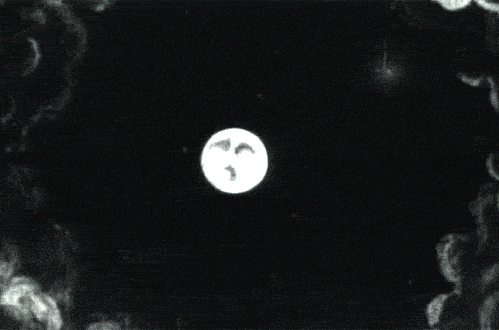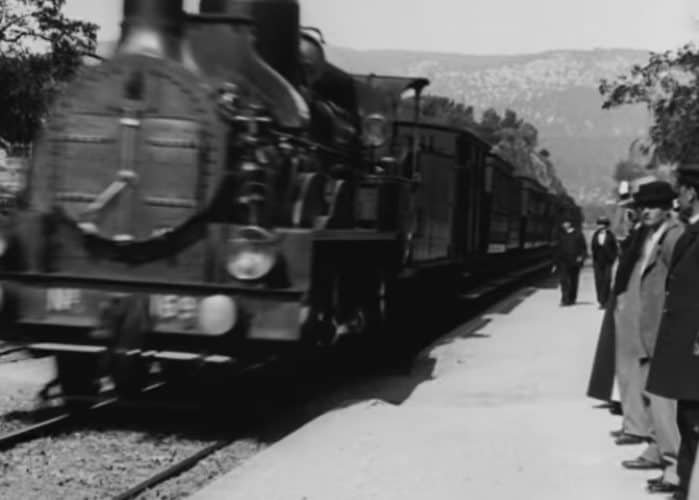cinema of attractions
est. 1895 – 1910s
The term “Cinema of Attractions” is one of the most intriguing and transformative concepts in the history of film studies. Coined by film scholar Tom Gunning, this concept emphasizes the early, thrilling, and often surprising qualities of film in its developing years.
Defining the Cinema of Attractions
The Cinema of Attractions represents an early form of filmmaking, prevalent in the late 19th and early 20th centuries, focused on captivating and dazzling audiences through sheer spectacle and novelty. Unlike narrative cinema, which prioritizes storytelling, the Cinema of Attractions aims to astonish and amuse viewers with visual and sensory experiences. These films were typically short, just a few minutes long, featuring breathtaking stunts, optical illusions, and special effects designed to elicit wonder and excitement. These early films were a precursor to modern-day blockbuster spectacles, creating a sense of awe and excitement that remains an important part of cinema.
At its core, the Cinema of Attractions was all about creating a visceral experience. Audiences flocked to theaters to witness the magic of moving images on a large screen for the very first time, and filmmakers capitalized on this curiosity by showcasing their technical prowess. This era of cinema was characterized by its direct engagement with the audience, commonly breaking the fourth wall to invite viewers into the spectacle.
Films included elements of live performance, and were frequently accompanied by live music, narration, and sound effects. This combination of moving images and live elements turned cinema into a multifaceted event, making it an unforgettable experience for the audience. The theatricality of these early films can be seen as a continuation of the traditions of vaudeville and magic shows, where the goal was to entertain and astonish.


Pioneers of the Cinema of Attractions
Early films were brief and consisted of simple actions or visual spectacles, like a train approaching the camera in the famous Lumiere Brothers’ film “Arrival of a Train at La Ciotat” (1895). Audiences were astounded by these basic attractions.
Visionaries such as Georges Melies, celebrated for his groundbreaking masterpiece “A Trip to the Moon” (1902), took audiences on a captivating 14-minute odyssey, immersing them in a fantastical and visually mesmerizing expedition with a group of astronomers and their ambitious quest to reach the surface of the Moon. The film’s pioneering use of effects, such as stop-motion animation, hand-painted color, and double exposure, still captivates audiences today. Not only does it highlight Melies’ creative genius, but it also underscores humanity’s early fascination with space.
Another notable figure in this era was Edwin S. Porter, who directed “The Great Train Robbery” (1903), a film that introduced continuity editing and created the foundation for eventual narrative cinema. However, even in this narrative-infused film, elements of the Cinema of Attractions could be seen in its action sequences and thrilling train robbery scenes.


Moving Beyond Spectacle
The concept of the Cinema of Attractions gradually evolved into narrative cinema, with filmmakers like D.W. Griffith pushing the boundaries of storytelling in films like “The Birth of a Nation” (1915). However, the spirit of the Cinema of Attractions continued in various forms, such as theme park attractions and immersive cinema experiences. The influence of this early cinematic tradition can be seen in modern experimental and avant-garde films, which prioritize visual impact and innovation over conventional storytelling.
In conclusion, the Cinema of Attractions, an often-underappreciated movement in the history of cinema, played a pivotal role in shaping the art of filmmaking. Its legacy endures through contemporary cinema, influencing the ways filmmakers engage and astound their audiences. Understanding this unique era enriches our appreciation of the diverse and evolving landscape of cinema, where the spectacle remains as enthralling today as it was in the age of early film. Exploring the origins of cinema through this lens allows us to appreciate the evolution of the medium and the excitement it continuously brings to viewers around the world.
Refer to the Listed Films for the recommended works associated with the movement. Also, check out the rest of the Film Movements on our website.
